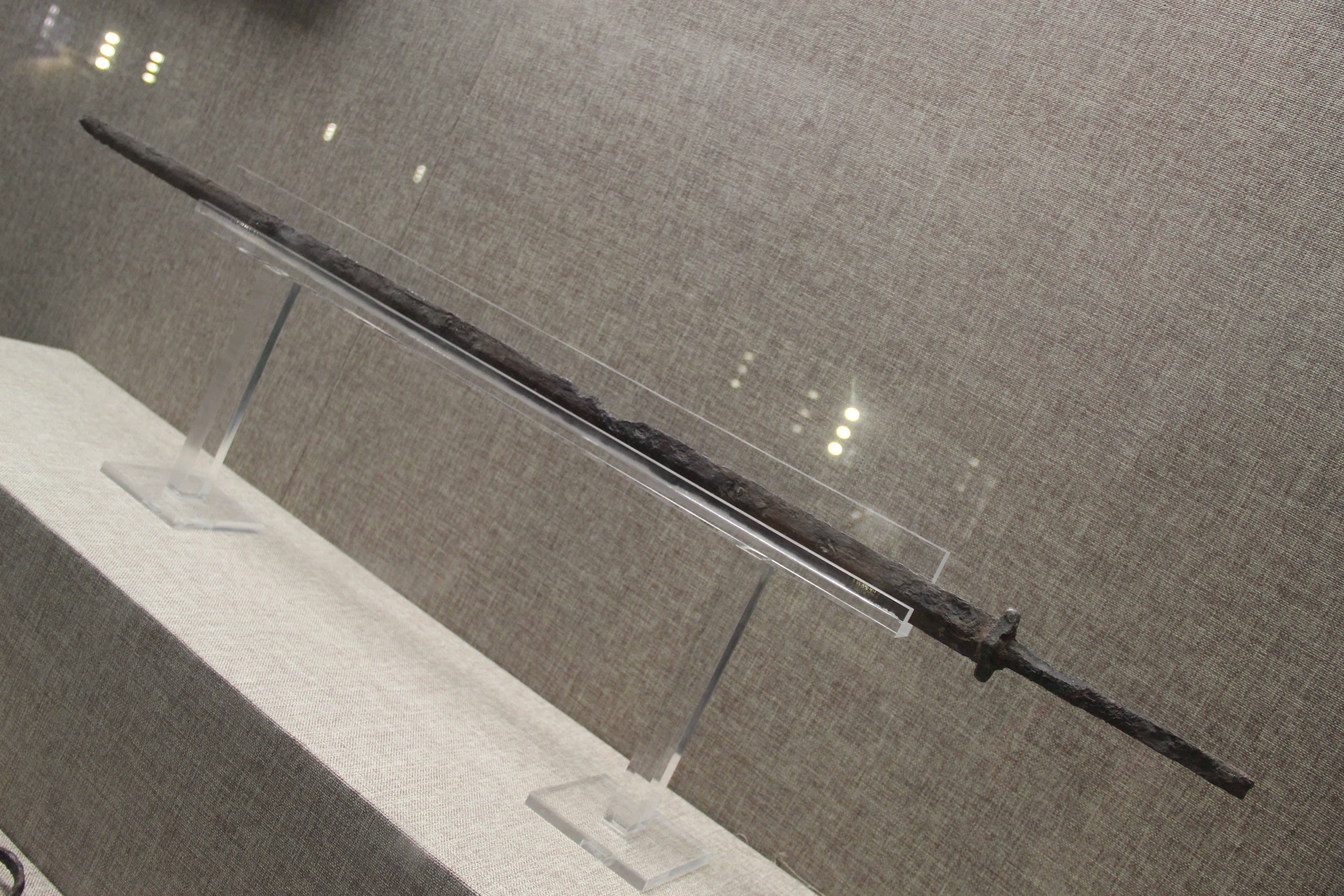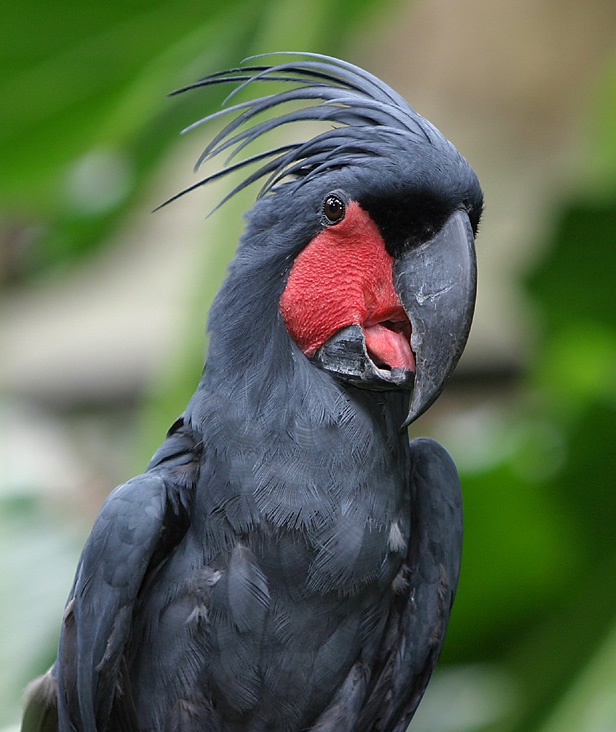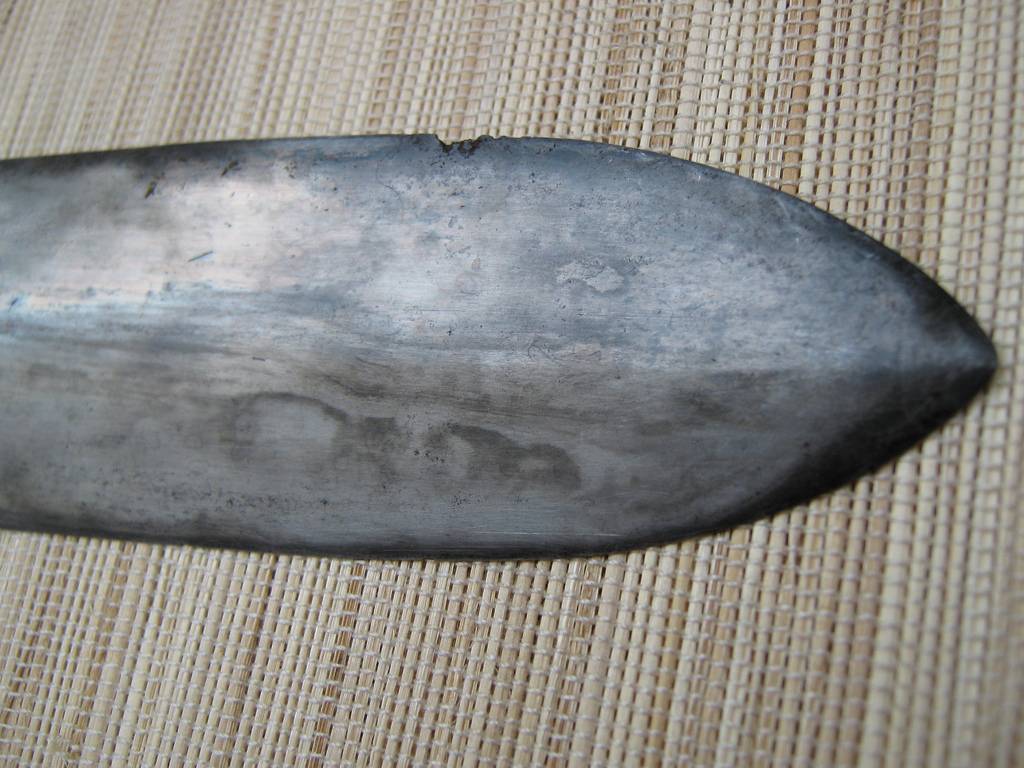|
Balasiong
''Balasiong'' (also spelled ''balacion'', ''baliciong'', or ''balisiong'') is a Filipino sword used by Muslim Filipino ethnolinguistic groups (the Moro people) in the Southern Philippines. It is a type of ''kalis'' but differs in that the double-edged blade isn't straight or wavy but instead slightly convex. It also tapers sharply to the tip. The hilt is slightly curved, an element known as the ''kakatua'' (cockatoo). See also *Kalis *Punyal *Kampilan *Panabas The panabas, also known as nawi, is a large, forward-curved sword or battle axe used by certain ethnic groups in the southern Philippines. It can range in size from 2 to 4 feet and can be held with one or both hands, delivering a deep, meat cleaver ... References Blade weapons Filipino swords {{Sword-stub ... [...More Info...] [...Related Items...] OR: [Wikipedia] [Google] [Baidu] |
Philippines
The Philippines (; fil, Pilipinas, links=no), officially the Republic of the Philippines ( fil, Republika ng Pilipinas, links=no), * bik, Republika kan Filipinas * ceb, Republika sa Pilipinas * cbk, República de Filipinas * hil, Republika sang Filipinas * ibg, Republika nat Filipinas * ilo, Republika ti Filipinas * ivv, Republika nu Filipinas * pam, Republika ning Filipinas * krj, Republika kang Pilipinas * mdh, Republika nu Pilipinas * mrw, Republika a Pilipinas * pag, Republika na Filipinas * xsb, Republika nin Pilipinas * sgd, Republika nan Pilipinas * tgl, Republika ng Pilipinas * tsg, Republika sin Pilipinas * war, Republika han Pilipinas * yka, Republika si Pilipinas In the recognized optional languages of the Philippines: * es, República de las Filipinas * ar, جمهورية الفلبين, Jumhūriyyat al-Filibbīn is an archipelagic country in Southeast Asia. It is situated in the western Pacific Ocean and consists of around 7,641 islands t ... [...More Info...] [...Related Items...] OR: [Wikipedia] [Google] [Baidu] |
Sword
A sword is an edged, bladed weapon intended for manual cutting or thrusting. Its blade, longer than a knife or dagger, is attached to a hilt and can be straight or curved. A thrusting sword tends to have a straighter blade with a pointed tip. A slashing sword is more likely to be curved and to have a sharpened cutting edge on one or both sides of the blade. Many swords are designed for both thrusting and slashing. The precise definition of a sword varies by historical epoch and geographic region. Historically, the sword developed in the Bronze Age, evolving from the dagger; the earliest specimens date to about 1600 BC. The later Iron Age sword remained fairly short and without a crossguard. The spatha, as it developed in the Late Roman army, became the predecessor of the European sword of the Middle Ages, at first adopted as the Migration Period sword, and only in the High Middle Ages, developed into the classical arming sword with crossguard. The word '' sword'' conti ... [...More Info...] [...Related Items...] OR: [Wikipedia] [Google] [Baidu] |
Moro Peoples
The Moro people or Bangsamoro people are the 13 Muslim-majority ethnolinguistic Austronesian people, Austronesian groups of Mindanao, Sulu Archipelago, Sulu, and Palawan (island), Palawan, native to the region known as the Bangsamoro (lit. ''Moro nation'' or ''Moro country''). As Muslim-majority ethnic groups, they form the largest non-Christianity in the Philippines, Christian population in the Philippines, and comprise about 5% of the country's total population, or 5 million people. Most Moros are followers of Sunni Islam of the Shafiʽi school of fiqh. The Moros were once independent under a variety of local states, including the Sultanate of Sulu, the Sultanate of Maguindanao, and the Confederation of sultanates in Lanao; withstanding repeated Spanish invasions, the Moro states remained de facto independent up until the Moro Rebellion of the early 20th century. Upon History of the Philippines (1946–1965), Philippine independence in 1946, the Moros continued their struggl ... [...More Info...] [...Related Items...] OR: [Wikipedia] [Google] [Baidu] |
Sword
A sword is an edged, bladed weapon intended for manual cutting or thrusting. Its blade, longer than a knife or dagger, is attached to a hilt and can be straight or curved. A thrusting sword tends to have a straighter blade with a pointed tip. A slashing sword is more likely to be curved and to have a sharpened cutting edge on one or both sides of the blade. Many swords are designed for both thrusting and slashing. The precise definition of a sword varies by historical epoch and geographic region. Historically, the sword developed in the Bronze Age, evolving from the dagger; the earliest specimens date to about 1600 BC. The later Iron Age sword remained fairly short and without a crossguard. The spatha, as it developed in the Late Roman army, became the predecessor of the European sword of the Middle Ages, at first adopted as the Migration Period sword, and only in the High Middle Ages, developed into the classical arming sword with crossguard. The word '' sword'' conti ... [...More Info...] [...Related Items...] OR: [Wikipedia] [Google] [Baidu] |
Muslim Filipino
Islam was the first-recorded monotheistic religion in the Philippines. Islam reached the Philippines in the 14th century with the arrival of Muslim traders from the Persian Gulf, southern India, and their followers from several sultanates in the wider Malay Archipelago. The first missionaries then followed in the late 14th and early 15th centuries. They facilitated the formation of sultanates and conquests in mainland Mindanao and Sulu. Those who converted to Islam came to be known as the Moros, with Muslim conquest reaching as far as Tondo that was later supplanted by Bruneian Empire vassal-state of Maynila. Muslim sultanates had already begun expanding in the central Philippines by the 16th century, when the Spanish fleet led by Ferdinand Magellan arrived. The subsequent Spanish conquest led to Catholic Christianity becoming the predominant religion in most of the modern-day Philippines, with Islam becoming a significant minority religion. In the 21st century, there is some ... [...More Info...] [...Related Items...] OR: [Wikipedia] [Google] [Baidu] |
Moro People
The Moro people or Bangsamoro people are the 13 Muslim-majority ethnolinguistic Austronesian groups of Mindanao, Sulu, and Palawan, native to the region known as the Bangsamoro (lit. ''Moro nation'' or ''Moro country''). As Muslim-majority ethnic groups, they form the largest non- Christian population in the Philippines, and comprise about 5% of the country's total population, or 5 million people. Most Moros are followers of Sunni Islam of the Shafiʽi school of fiqh. The Moros were once independent under a variety of local states, including the Sultanate of Sulu, the Sultanate of Maguindanao, and the Confederation of sultanates in Lanao; withstanding repeated Spanish invasions, the Moro states remained de facto independent up until the Moro Rebellion of the early 20th century. Upon Philippine independence in 1946, the Moros continued their struggle for self-determination against a predominantly–Christian Philippines, culminating in a decades-long insurgency of ar ... [...More Info...] [...Related Items...] OR: [Wikipedia] [Google] [Baidu] |
Southern Philippines
Mindanao ( ) (Jawi Alphabet, Jawi: مينداناو) is the List of islands of the Philippines, second-largest island in the Philippines, after Luzon, and List of islands by population, seventh-most populous island in the world. Located in the southern region of the archipelago, the island is part of an island group of the same name that also includes its adjacent islands, notably the Sulu Archipelago. According to the 2020 census, Mindanao has a population of 26,252,442 people, while the entire island group has an estimated population of 27,021,036 according to the 2021 census. Mindanao is divided into six administrative regions: the Zamboanga Peninsula, Northern Mindanao, the Caraga region, the Davao Region, Davao region, Soccsksargen, and the autonomous region of Bangsamoro. According to the 2020 census, Davao City is the most populous city on the island, with 1,776,949 people, followed by Zamboanga City (pop. 977,234), Cagayan de Oro (pop. 728,402), General Santos (pop. 697 ... [...More Info...] [...Related Items...] OR: [Wikipedia] [Google] [Baidu] |
Kalis
A kalis (Baybayin: or ; Jawi script: كاليس ; Abecedario: ''cáli'', ''cális'') is a type of double-edged Philippine sword, often with a "wavy" section. The kalis has a double-edged blade, which is commonly straight from the tip but wavy near the handle. Kalis with fully straight or fully wavy blades also exist. It is similar to the Javanese keris, but differs in that the kalis is a sword, not a dagger. It is much larger than the keris and has a straight or slightly curved hilt, making it primarily a heavy slashing weapon (in contrast to the stabbing pistol grip of the keris). The wavy portion of the kalis is said to be meant to facilitate easier slashing in battle - since a straight edge tends to get stuck in the opponent's bones, the wavy portion allows the kalis' bearer to more easily pull the weapon out of his opponent's body. This weapon was featured in the American bladesmithing competition, Forged in Fire (TV series)'s season 1 episode 8. History The predecessor ... [...More Info...] [...Related Items...] OR: [Wikipedia] [Google] [Baidu] |
Cockatoo
A cockatoo is any of the 21 parrot species belonging to the family Cacatuidae, the only family in the superfamily Cacatuoidea. Along with the Psittacoidea (true parrots) and the Strigopoidea (large New Zealand parrots), they make up the order Psittaciformes. The family has a mainly Australasian distribution, ranging from the Philippines and the eastern Indonesian islands of Wallacea to New Guinea, the Solomon Islands and Australia. Cockatoos are recognisable by the prominent crests and curved bills. Their plumage is generally less colourful than that of other parrots, being mainly white, grey or black and often with coloured features in the crest, cheeks or tail. On average they are larger than other parrots; however, the cockatiel, the smallest cockatoo species, is a small bird. The phylogenetic position of the cockatiel remains unresolved, other than that it is one of the earliest offshoots of the cockatoo lineage. The remaining species are in two main clades. The five l ... [...More Info...] [...Related Items...] OR: [Wikipedia] [Google] [Baidu] |
Kalis
A kalis (Baybayin: or ; Jawi script: كاليس ; Abecedario: ''cáli'', ''cális'') is a type of double-edged Philippine sword, often with a "wavy" section. The kalis has a double-edged blade, which is commonly straight from the tip but wavy near the handle. Kalis with fully straight or fully wavy blades also exist. It is similar to the Javanese keris, but differs in that the kalis is a sword, not a dagger. It is much larger than the keris and has a straight or slightly curved hilt, making it primarily a heavy slashing weapon (in contrast to the stabbing pistol grip of the keris). The wavy portion of the kalis is said to be meant to facilitate easier slashing in battle - since a straight edge tends to get stuck in the opponent's bones, the wavy portion allows the kalis' bearer to more easily pull the weapon out of his opponent's body. This weapon was featured in the American bladesmithing competition, Forged in Fire (TV series)'s season 1 episode 8. History The predecessor ... [...More Info...] [...Related Items...] OR: [Wikipedia] [Google] [Baidu] |
Punyal
350px, An antique gunong from Mindanao. The gunong is a knife from Mindanao and the Visayas islands of the Philippines. In ancient past, it was called bunong by the Tagalog people. It is essentially a diminutive form of the larger kalis or kris. The gunong serves both as a utility knife and as a thrusting weapon used for close quarter fighting—usually as a last defense. It is most often associated with the Maranao, among whom the gunong was traditionally carried by both sexes, although it exists in other cultures throughout Mindanao and the Visayas. The weapon is generally tucked into the back of a waist sash. The gunong is one of many bladed weapons portrayed in the "Weapons of Moroland" plaque that has become a common souvenir item and pop culture icon in the Philippines. It is also known as punyal (also known as ''puñal de kris'' or ''kris knife'') among Visayans and the Yakan people; and badao among the Lumad people (which also applies to the balarao daggers). History ... [...More Info...] [...Related Items...] OR: [Wikipedia] [Google] [Baidu] |
Kampilan
The kampilan (Baybayin: ) also known as talong is a type of single-edged sword, traditionally used by various ethnic groups in the Philippine archipelago. It has a distinct profile, with the tapered blade being much broader and thinner at the point than at its base, sometimes with a protruding spikelet along the flat side of the tip. The design of the pommel varies between ethnic groups, but it usually depicts a ''kakatua'' (cockatoo). This weapon was featured in the American bladesmithing competition, ''Forged in Fire'', in season 4 episode 16. Names "Kampilan" is the term most commonly used for the sword in the Tagalog, Ilocano and Visayan languages. It simply means "sword". It is known by other names in other ethnic groups in the Philippines including Kapampangan talibong or talibon (not to be confused with the Visayan talibon); Maranao kifing; Iranun parang kampilan; and Tboli tok and kafilan. History Kampilan are mentioned in ancient Filipino epics, including the Hil ... [...More Info...] [...Related Items...] OR: [Wikipedia] [Google] [Baidu] |








_badao_daggers.jpg)